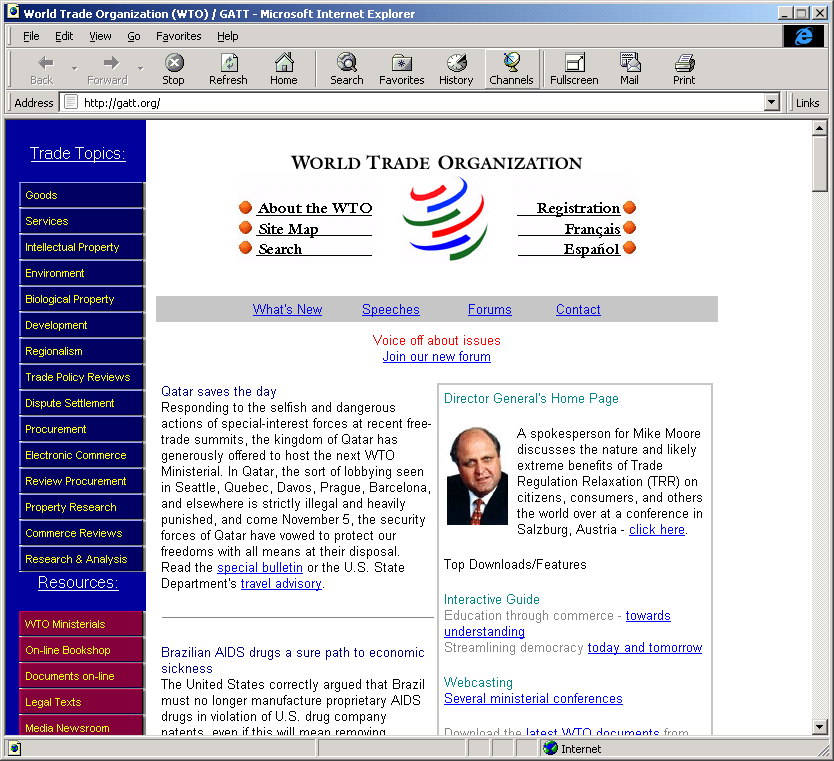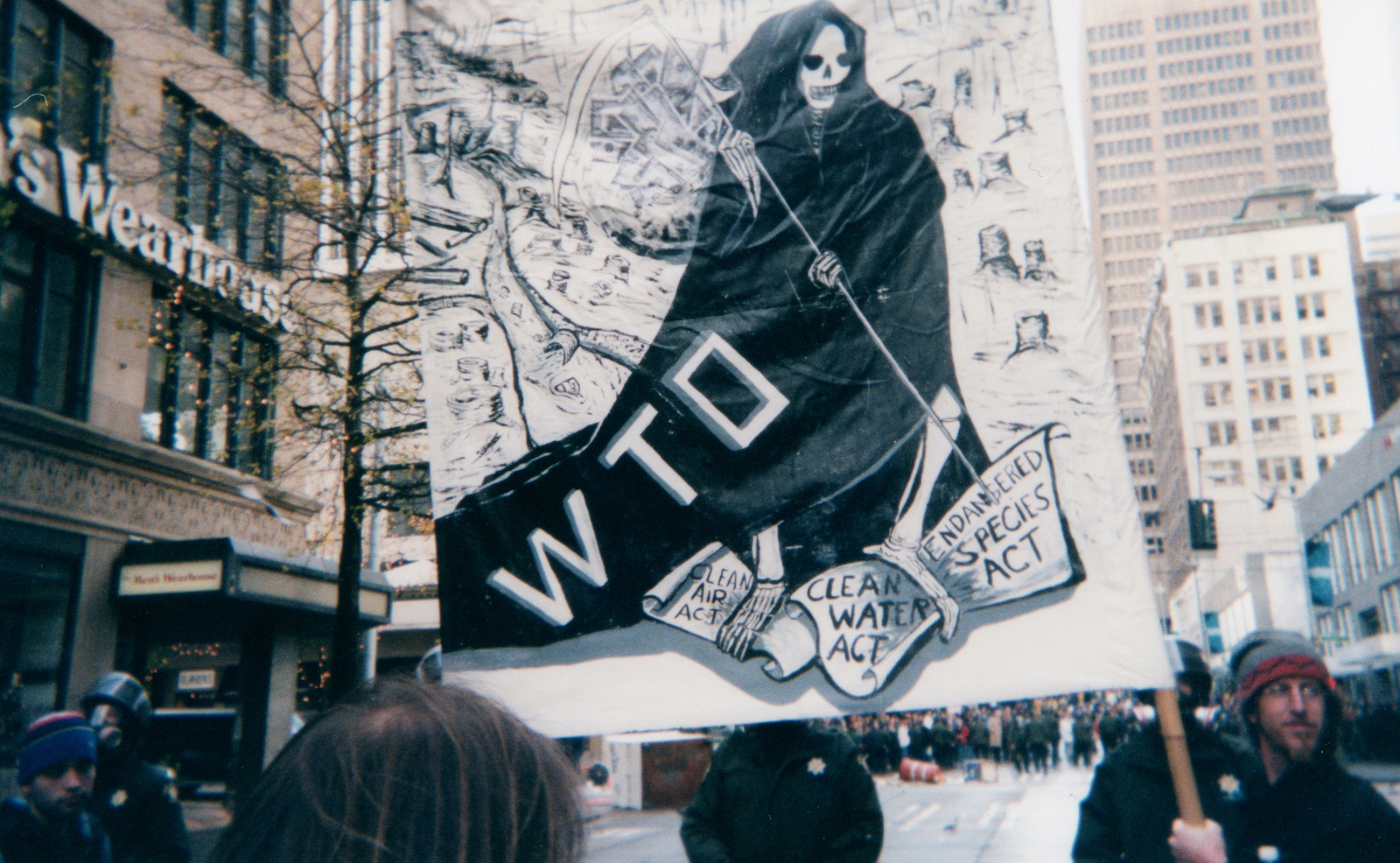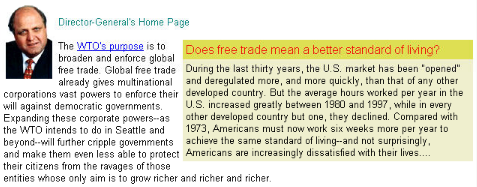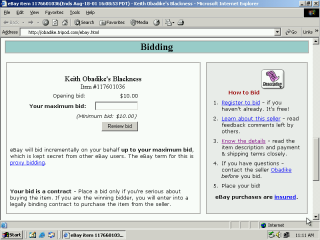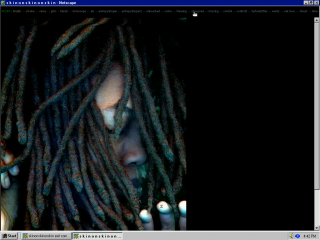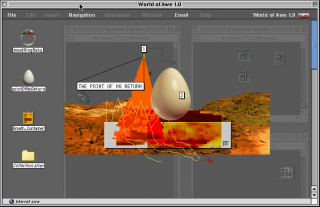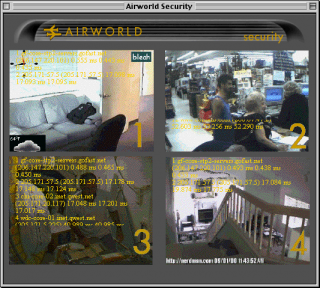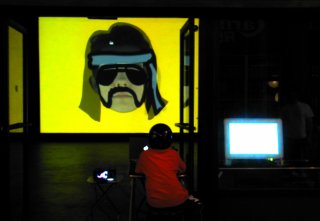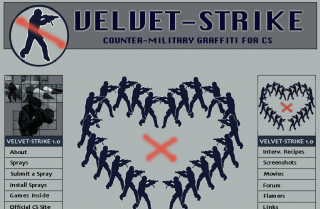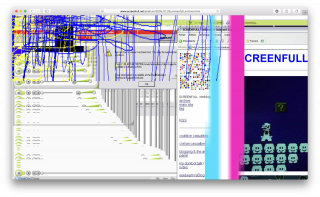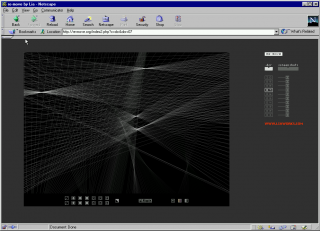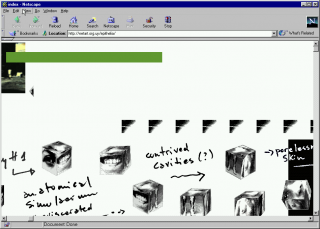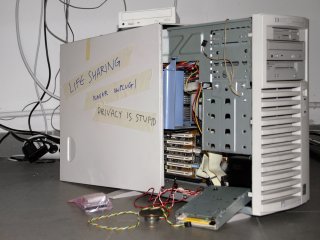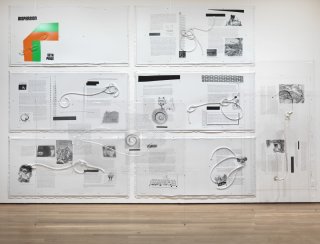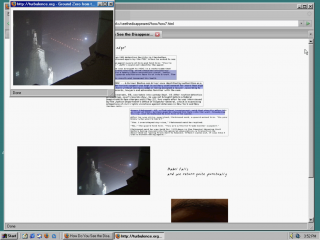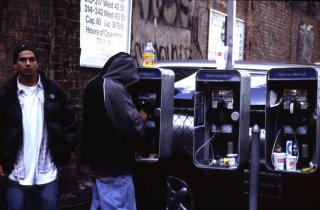Gatt.org
The Yes Men
1999 - 2002
In the run-up the heavily protested 1999 World Trade Organization (WTO) conference in Seattle, the RTMark collective created Gatt.org. Named after the General Agreement on Trade and Tariffs, the treaty that birthed the WTO, Gatt.org had the look and feel of a legitimate government website, but featured strangely blunt policy positions denouncing human rights and democracy, and celebrating corporate profit.
This satire earned RTMark condemnation from the WTO and numerous emails from credulous correspondents, including an invitation to speak at a conference on international trade. The artists responded affirmatively, and began calling themselves The Yes Men, also known as Mike Bonanno and Andy Bichlbaum.
Now with numerous campaigns and three feature films under their belts, The Yes Men’s practice continues to highlight the performative dimension of corporate power, and to make visible the ideology that underpins it.
VISIT WORK via Oldweb.today
“The Yes Men agree their way into the fortified compounds of commerce, ask questions, and then smuggle out the stories of their hijinks to provide a public glimpse at the behind the scenes world of business. In other words, The Yes Men are team players, but they play for the opposing team.”
The Yes Men’s predecessor RTMark—prounounced “artmark,” and properly written as ®™ark—was a collective dedicated to artistic anti-corporate activism. Registered as an actual corporation itself, the group operated like a mutual fund, announcing “investments” in campaigns such as the FloodNet virtual sit-in (featured in Chapter 1 of this online exhibition. They also created spoof websites like the fake campaign website GWBush.com (1999).
 Screenshot, The Yes Men, GWBush.com (1999) as seen in IE4 via oldweb.today.
Screenshot, The Yes Men, GWBush.com (1999) as seen in IE4 via oldweb.today.
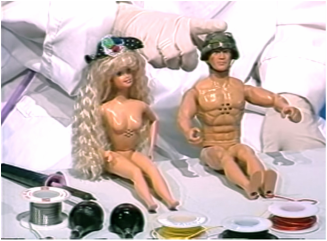 Before joining forces with Andy, Mike had been involved in projects such as The Barbie Liberation Organization (1993), which swapped the voice boxes of Teen Talk Barbies and talking GI Joes before replacing them on store shelves for unsuspecting consumers to bring home.
Before joining forces with Andy, Mike had been involved in projects such as The Barbie Liberation Organization (1993), which swapped the voice boxes of Teen Talk Barbies and talking GI Joes before replacing them on store shelves for unsuspecting consumers to bring home.
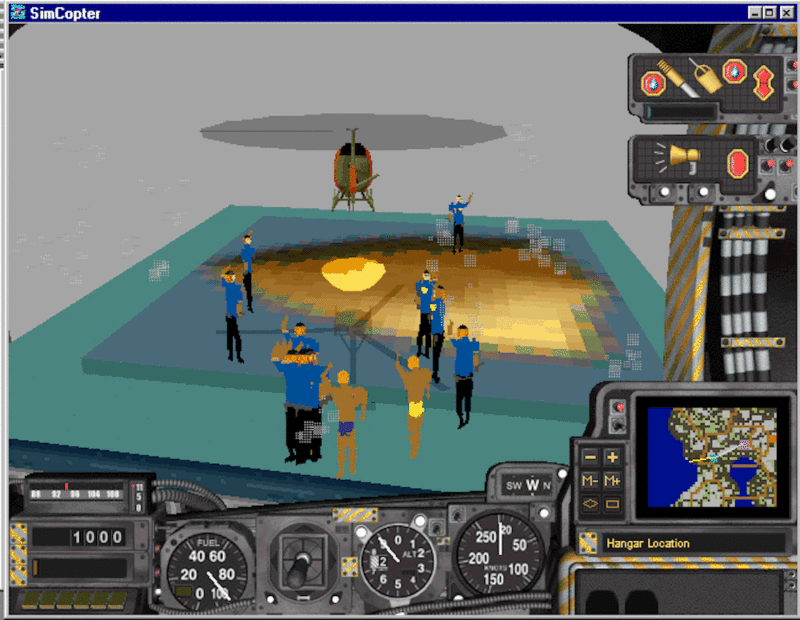 Andy had achieved notoriety as the designer responsible for adding an unauthorized easter egg to SimCopter, in which on particular dates men in Speedos with glowing nipples would appear and begin to kiss and hug one another.
Andy had achieved notoriety as the designer responsible for adding an unauthorized easter egg to SimCopter, in which on particular dates men in Speedos with glowing nipples would appear and begin to kiss and hug one another.
This kind of activism, which aimed to appropriate media channels controlled by corporations and use them for subversive ends, was often called “culture jamming.” It was a popular form of artistic resistance in the 1990s, a time in which activist movements increasingly saw corporations as a primary target.

“We are using corporate effects on the outside to tell a story that attacks corporations. It is kind of Jiu Jitsu or a Judo move. We are using the effects and strength of corporations, the strength they have arrogated over the years, to unseat them and to attack them.”
—Ernesto Lucha of RTMark, Nettime
Inspired by the Zapatista movement in Mexico, activists around the world took particular aim at free trade agreements, which often undercut local governments’ ability to ensure labor and environmental standards. In 1999, the World Trade Organization conference in Seattle became an important focal point for this movement. An estimated 40,000 anti-globalization protestors descended on the city, disrupting the conference’s opening ceremony and bringing media attention to their cause.
On the eve of the conference, RTMark’s spoof of the WTO’s website went live at www.gatt.org. The site borrowed official logos and images directly from wto.org, but its text portrayed the WTO as an anti-democratic organization whose only mission was to increase corporate profit.
For instance, the “About the WTO page” reads:
“Globalization, like many huge things, results from two opposite, but eerily complementary, forces:
1. Early efforts by well-meaning people to build a better tomorrow (on the raw material of historical horror)
2. Long-term efforts by single minded corporations to build better profits (on the raw material of the above).”
Gatt.org drew the attention and ire of the actual WTO, who issued an official press release on November 23,1999 titled “WTO DG Moore deplores fake WTO websites: They ‘undermine WTO transparency.’” The statement called the fake website, “illegal and unfair.”
 Screenshot of the WTO’s official 1999 press release as seen in IE4 via oldweb.today.
Screenshot of the WTO’s official 1999 press release as seen in IE4 via oldweb.today.
The WTO had not issued any statement addressing the protests in Seattle and elsewhere, or the legality or fairness of the violent tactics used against them by Seattle police.
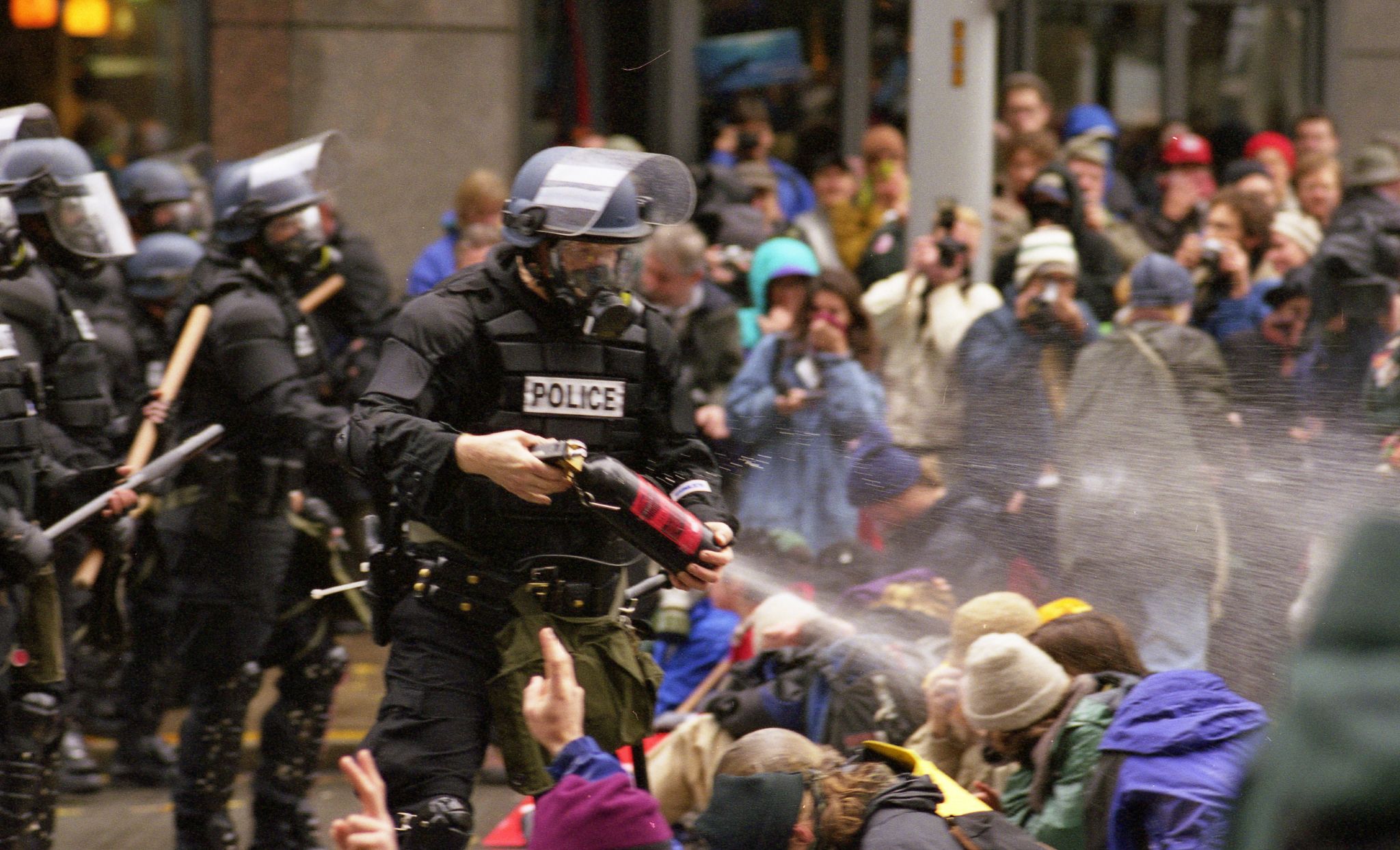 Steve Kaiser, Seattle, US - WTO protests 10. CC BY-SA 2.0 Link
Steve Kaiser, Seattle, US - WTO protests 10. CC BY-SA 2.0 Link
As the website ranked highly in search engines of the day, RTMark received countless real inquiries from people who had accidentally ended up on the website, including invitations to speak at official conferences worldwide that were intended for WTO Director Mike Moore. The Yes Men began as a way for RTMark to make appearances on Moore’s behalf.
In 2000, with the sponsorship of the artist duo UBERMORGEN, the Yes Men traveled to the Center for International Legal Studies’ “International Provision of Services and Sale of Goods” Conference in Salzburg, Austria, Austria, where the character of Andreas Bichlbauer appeared for the first time. He presented a PowerPoint titled Trade Regulation Relaxation and Concepts of Incremental Improvement: Governing Perspectives from 1970 to Present.
 Screenshot of The Yes Men’s PowerPoint proposal for Tariff Trade Restrictions (2000) as seen in IE4 via oldweb.today.
Screenshot of The Yes Men’s PowerPoint proposal for Tariff Trade Restrictions (2000) as seen in IE4 via oldweb.today.
Framing the WTO as absurd corporate extremists, the Yes Men delivered a PowerPoint that contained a modest proposal: showing the website voteauction.com by UBERMORGEN, they argued that democracy was an impediment to free trade, and should be mitigated by allowing voters to sell their votes. Mike and Andy expected this obvious satire to earn them outrage and possible arrest. Instead, they received polite applause.
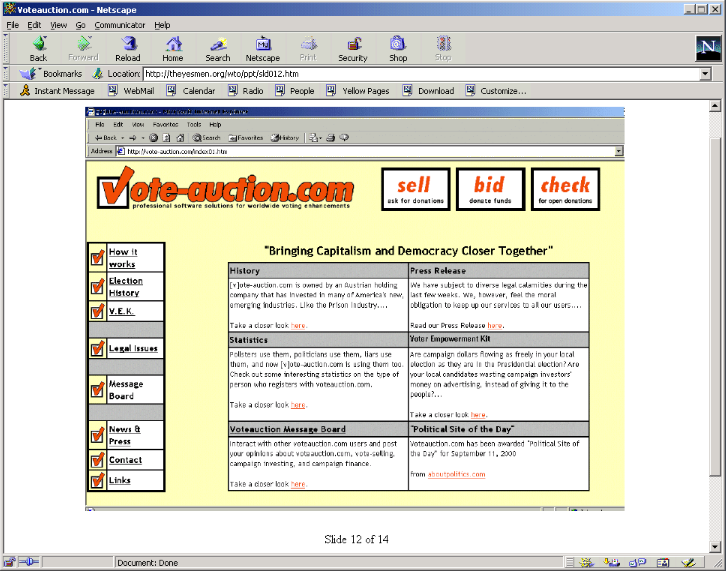 Screenshot of UBERMORGEN’s vote-auction.com (2000) from the Yes Men's presentation in Salzburg, as seen in IE4 via oldweb.today.
Screenshot of UBERMORGEN’s vote-auction.com (2000) from the Yes Men's presentation in Salzburg, as seen in IE4 via oldweb.today.
After the presentation, they began to correspond with conference attendees in hopes of garnering some reaction. One wrote: “The essential thrust of his speech appeared to be that Italians have a lesser worth ethic than the Dutch, that Americans would be better off auctioning their votes in the presidential election to the highest bidder, and that the primary role of the WTO was to create a one-world culture.”
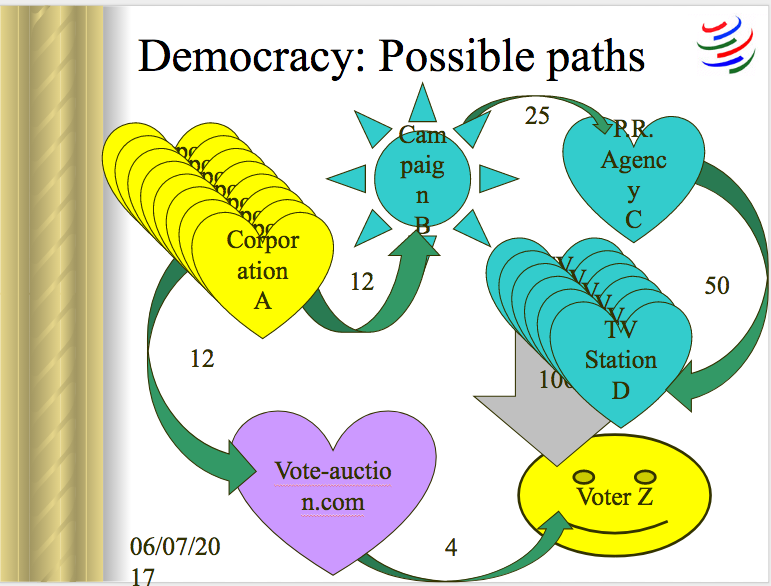 Slide from The Yes Men’s Trade Regulation PowerPoint.
Slide from The Yes Men’s Trade Regulation PowerPoint.
Dismayed by their polite reception, the Yes Men felt that their next gesture should be more extreme. At a textile conference in Finland, also in 2000, Andy ripped off his business attire mid-presentatoin to reveal a gold bodysuit with a giant phallus attached, which housed instruments used for monitoring and controlling an offshore labor force. The suit was presented along with a video by Patrick Lichty that heightened its absurdity–but still failed to garner outrage or incredulity from those in attendance.
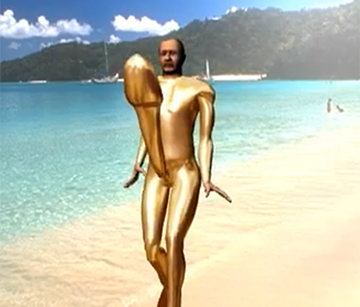
Managerial Leisure Suit (2000). Animation by Patrick Lichty.

Still image from The Yes Men (2003) showing conference attendees in Salzburg during Andreas Bichlbauer’s presentation.
“It’s easy to blend into some stupid, schlocky, random corporate conference. The PowerPoints are bad. The hotel or whatever has potted plants in the wrong places. The suits are not especially nice. People behave in awkward ways with excessive friendliness. And when The Yes Men mimic that and broadcast it, instantly everyone can get it: you’re making fun of that corporate world. It helps to remind you that the whole corporate world is ridiculous. Laughing at it can be powerful.”
“If you are of sound mind, you would see through us immediately. Yet to our surprise, we found we had absolutely no trouble fooling the experts.”
In May 2002, The Yes Men brought their drama with the WTO to a close by announcing the World Trade Organization’s official disbandment in a press release and speech in Sydney, Australia. They declared that the WTO would be dissolved and replaced by a new organization whose directives would be based on the Universal Declaration of Human Rights.
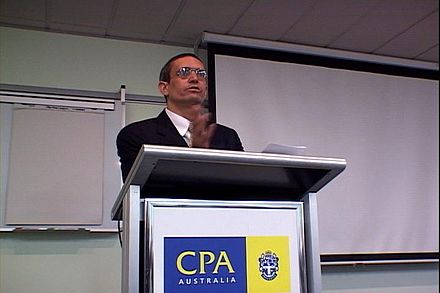 The Yes Men’s Andy Bichlbaum/Andreas Bichlbauer speaking in Sydney, Australia, 2002
The Yes Men’s Andy Bichlbaum/Andreas Bichlbauer speaking in Sydney, Australia, 2002
“What we’re doing can’t substitute for the core rage.”
The Yes Men are careful to draw a distinction between their artistic practice and their activism. Their impersonation of the WTO was made in a spirit of solidarity with a protest movement, but its primary goal was an artistic one: to make its anti-democratic positions more visible by mimicking and embodying them, making them as legible as possible, and holding them up for ridicule and critique.
